As the weather warms, you may be planning a trip to the beach. And along with splashing in the water and sunning on the sand, you will have plenty of opportunity to check out the different types of sea birds soaring through the sky. Whether they’re hovering over your picnic blanket or diving into the water, beach birds are a holiday staple. Seabirds have adapted to life in marine environments and spend their days around the shoreline or further out in the open sky over the ocean. Check out these 12 incredible types of sea birds to watch for at the beach and discover where to find them.
1. Booby
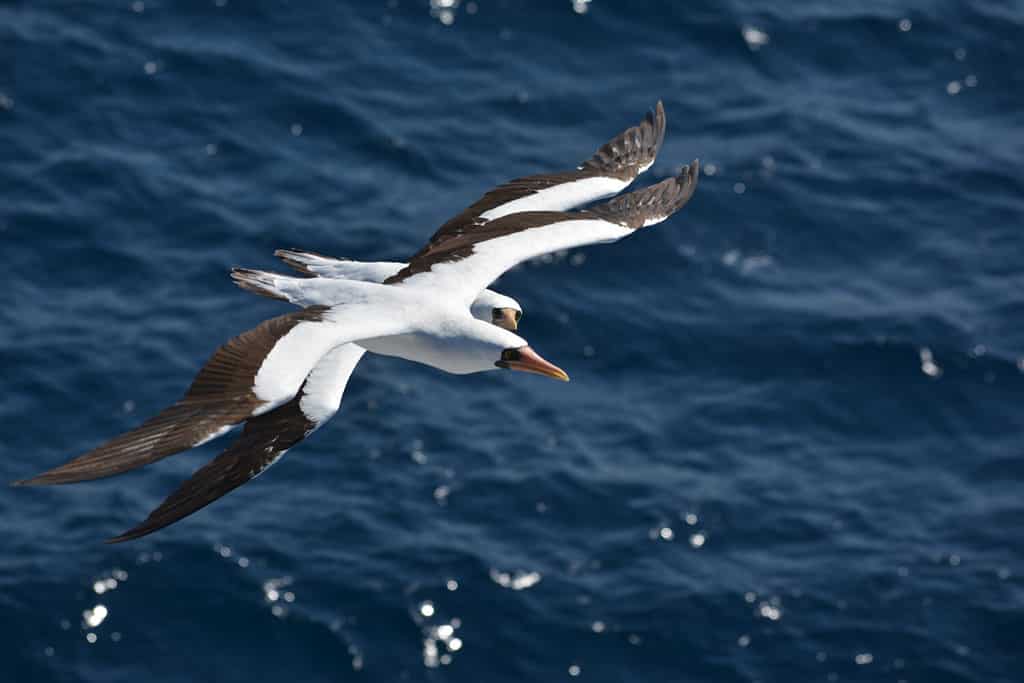
The booby bird is found all along the Pacific Coast.
©sushil20087817/Shutterstock.com
Boobies are large seabirds that specialize in diving into the water from extreme heights. There are five types that fly around North America: the blue-footed booby, brown booby, Nazca booby, masked booby, red-footed booby, and the northern gannet. Booby birds can be found all along the Pacific Ocean side of the country and off the coast of the Florida Keys. Look for them perching on rocks near the water or diving into the ocean.
2. Albatross
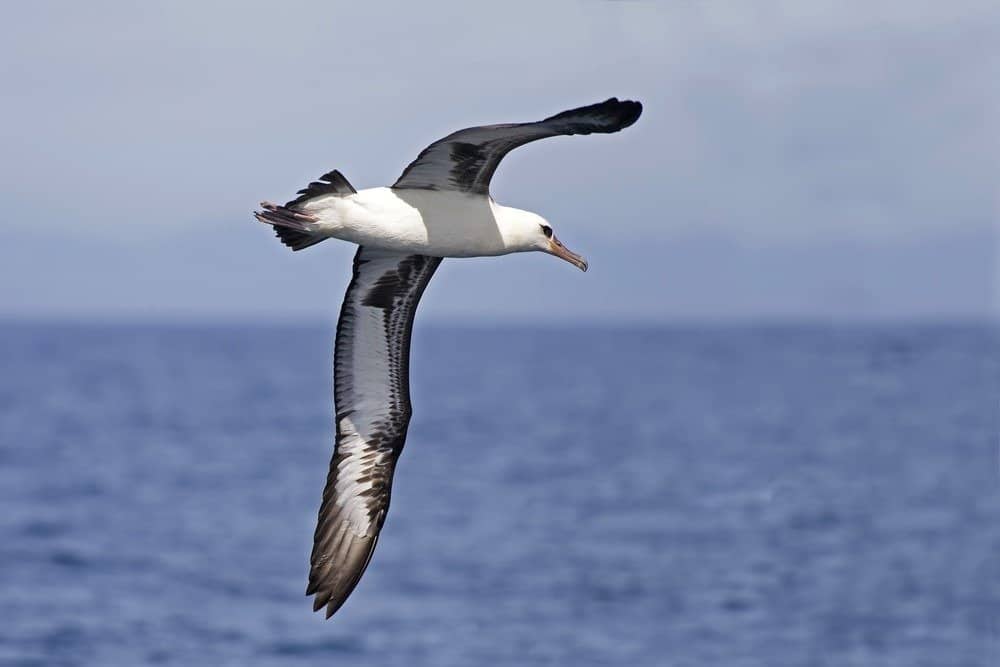
Look for the Laysan albatross in the skies near coastlines.
©Harold Stiver/Shutterstock.com
Albatrosses are some of the largest seabirds in the world, featuring 10-foot wingspans. Eight species are seen around North America’s oceans along the Pacific Coast. In fact, Alaska features the largest albatross colony in the world, where they breed on ocean islands. The black-footed albatross also has a nesting colony in Hawaii. If you don’t visit one of their nesting colonies, then look for them soaring in the sky.
3. Skua
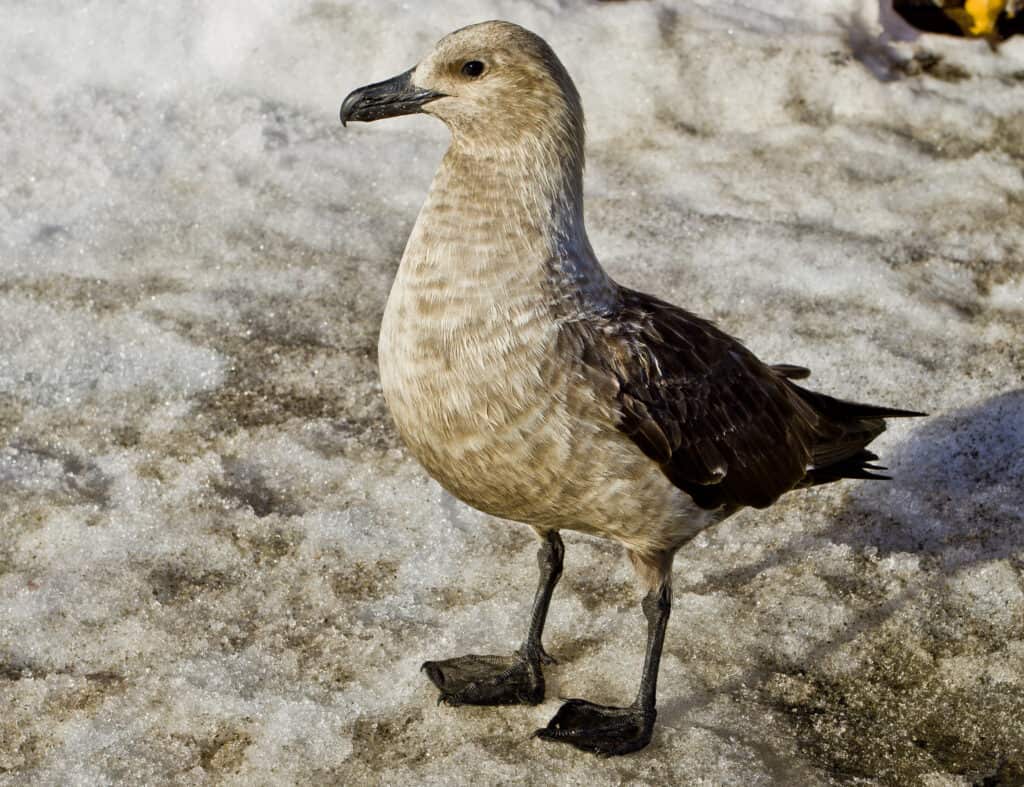
Most skuas have webbed feet and sharp claws, like the South Polar skua.
©Sergey 402/Shutterstock.com
Skuas are large, aggressive predators of the open sky over oceans and nearby shorelines. There are two species of skuas in North America, the great skua and the South Polar skua. Great skuas can be found at sea in northern waters, while the South Polar skua inhabits southern areas of the Atlantic and Pacific Oceans. These birds are known for their aggressive and opportunistic behavior.
4. Brown Pelican
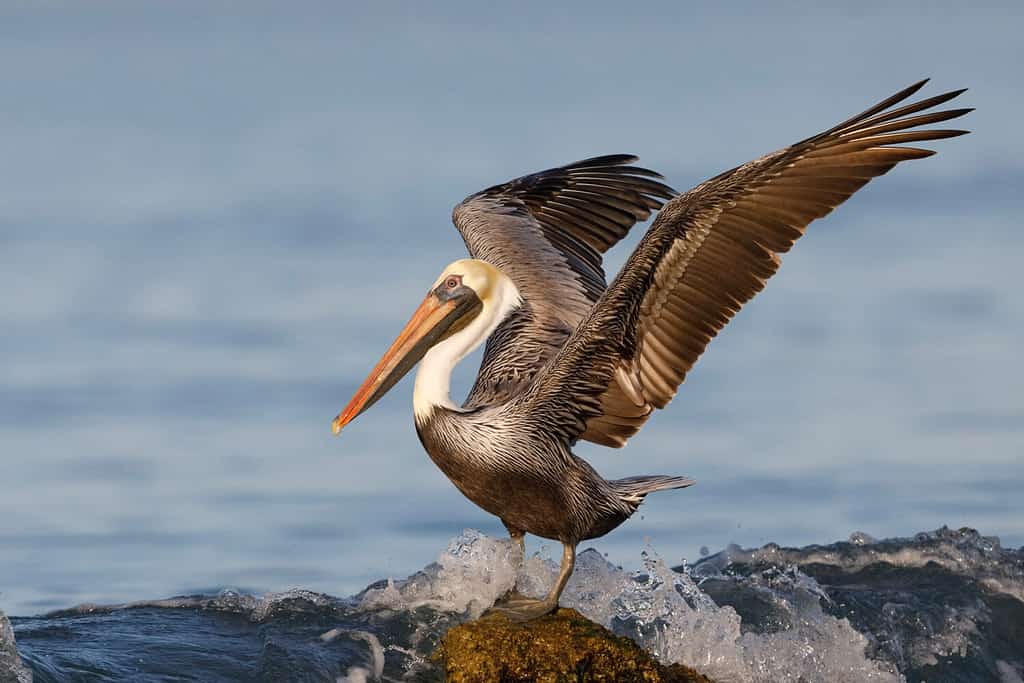
The brown pelican is threatened on the West Coast.
©Brian Lasenby/Shutterstock.com
The brown pelican is an easily recognizable bird, with its long neck, long bill, and seemingly awkward appearance. They are some of the largest seabirds in North America and can be found on both coasts of the United States. Brown pelicans on the West Coast are threatened and somewhat rare to find. But they are rather common along the East Coast. You can also find them in the Gulf of Mexico and throughout the Caribbean.
5. Frigatebird
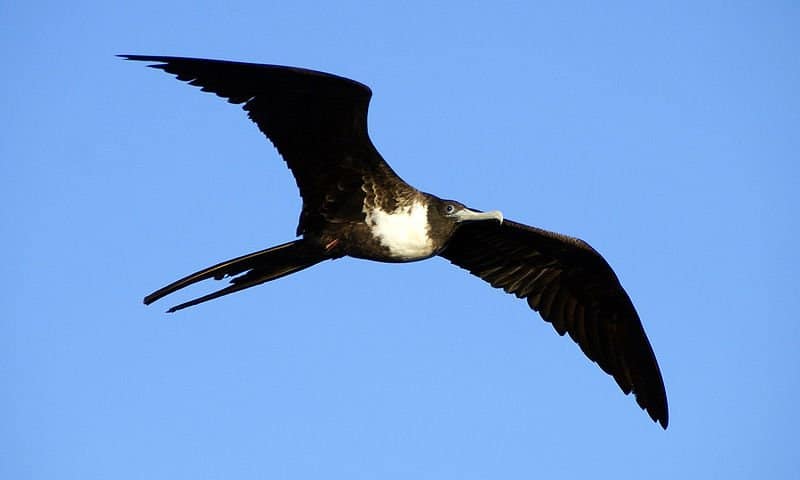
Female magnificent frigatebirds dive into the water for prey or scoop them off the surface.
Frigatebirds feature dark plumage, long, thin wings, and forked tails. They are tropical birds that spend their time around warm water. And they dive into the water for prey or scoop them off the surface. The magnificent frigatebird is the only of its kind native to North America’s warm oceans. However, two other species are rare vagrants to the continent: the lesser frigatebird and the great frigatebird. You can usually spot these birds along the coast but also offshore.
6. Common Murre
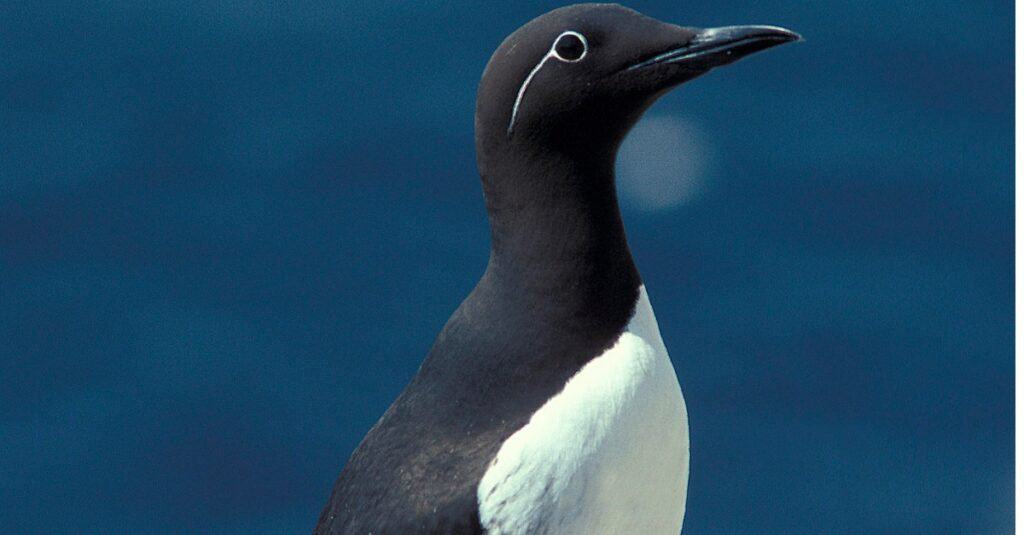
The common murre looks like a penguin.
©iStock.com/slowmotiongli
The common murre is a black and white seabird that looks somewhat like a flying penguin. And their wings can also be used as flippers in the water. These birds live on the open ocean and typically only come to land when nesting. You can find common murres along the Pacific Coast and the Northeastern Coast. Also, they breed in Alaska and some areas of Greenland.
7. Double-Crested Cormorant
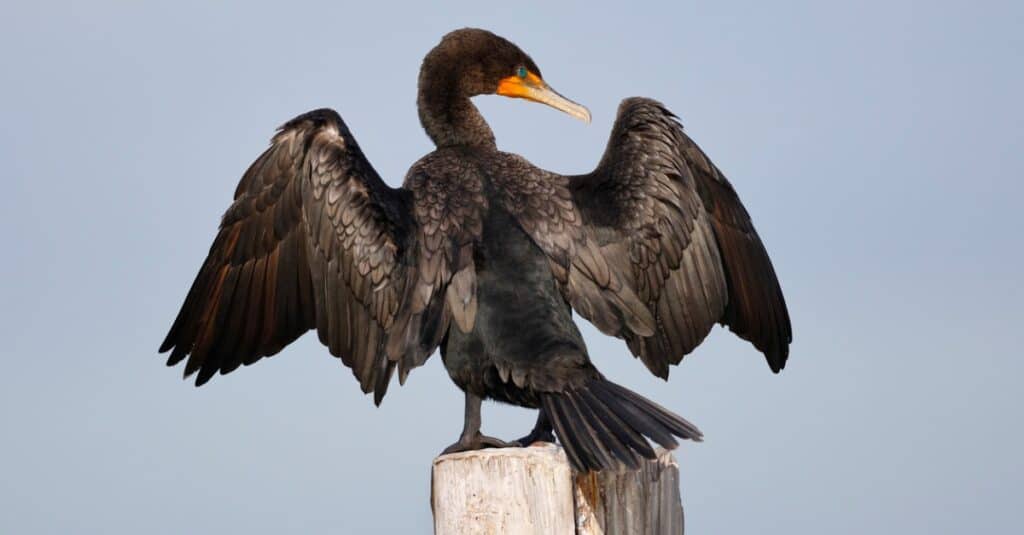
The double-crested cormorant is related to the booby.
©iStock.com/BrianLasenby
This unusual-looking bird is a cross between a loon and a goose. However, they are actually related to boobies. The double-crested cormorant is common across North America, where they spend their days diving for fish in freshwater and saltwater. While you can find them near lakes and streams, these birds also inhabit beach areas along both coasts. Look for them near docks and rocky islands.
8. Northern Gannet
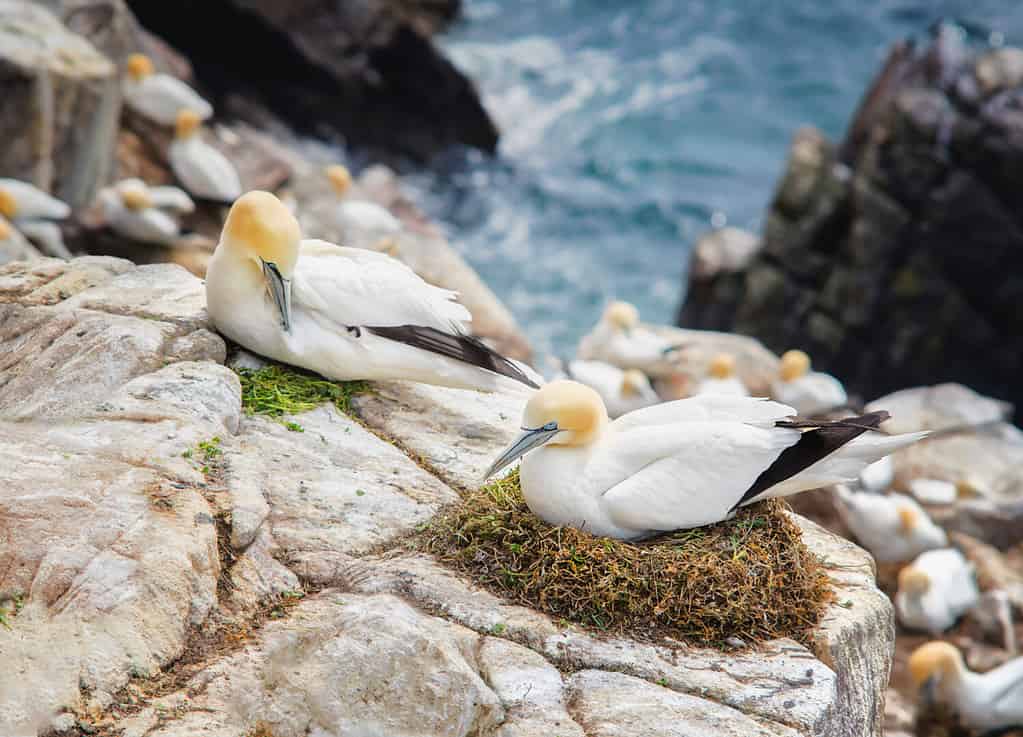
The northern gannet nests in enormous colonies.
©Algirdas Gelazius/Shutterstock.com
These large, sleek birds are easy to identify with their white plumage, gold crowns, and black wingtips. Plus, they are almost the same size as albatrosses. If you ever get the chance to see northern gannets feeding, you are in for a special treat. These seabirds dive into the water in flocks, making loud vocalizations and resurfacing with fish. You can spot northern gannets along the East Coast and the Gulf of Mexico. And they nest in enormous colonies on cliffs.
9. Northern Fulmar
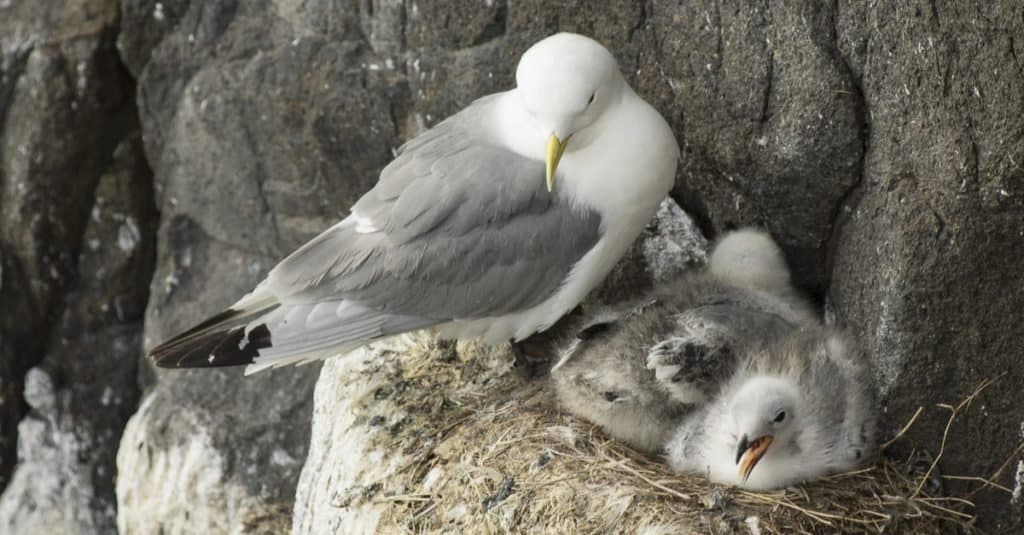
The fulmar is a superb glider of the open ocean. They brave storms when other sea birds seek refuge.
©MichaelY/Shutterstock.com
Northern fulmars easily get confused with gulls, but they are actually related to albatrosses. And you can tell by the nostril tubes on their bills and their swift movements. These birds like frigid deep water in northern regions of North America. You can find them in the Arctic Ocean and northern portions of the Atlantic. And they also inhabit the Pacific Ocean, making their way as far south as Mexico. They only come on land near Canada and Alaska for nesting.
10. Petrel
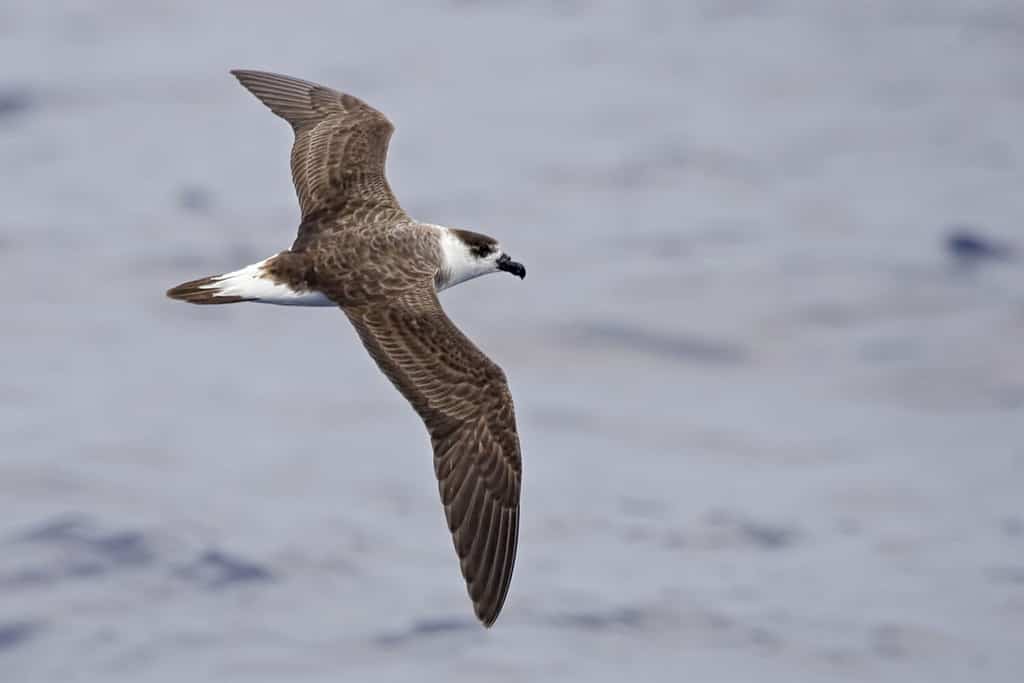
Petrels have tube vents on their bills and feature darker coloring.
©Harold Stiver/Shutterstock.com
There are at least six types of petrels native to the waters around North America. These birds also have tube vents on their bills and feature darker coloring on top and lighter coloring on the bottom. They are birds of the open water and have special adaptations that support near-constant flying and flapping against strong ocean winds. Some species are more likely to be seen from the shore than others, such as the black storm petrel, which you can spot off the West Coast.
11. Shearwater
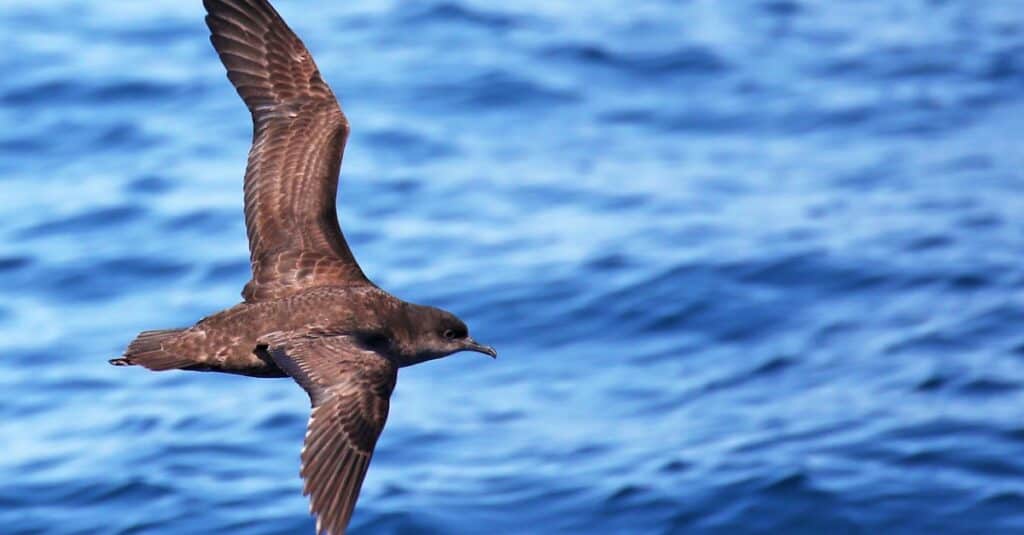
Shearwaters feed on schools of fish.
©iStock.com/Manakin
Another member of the tube-nose family, shearwaters spend most of their lives on the open ocean in large flocks. There are 15 species of shearwaters around North America, and they typically return to land during nesting or times of adverse weather, such as hurricanes and high winds. These birds feed in large groups on schools of fish that they find by perusing the water’s surface.
12. American Herring Gull
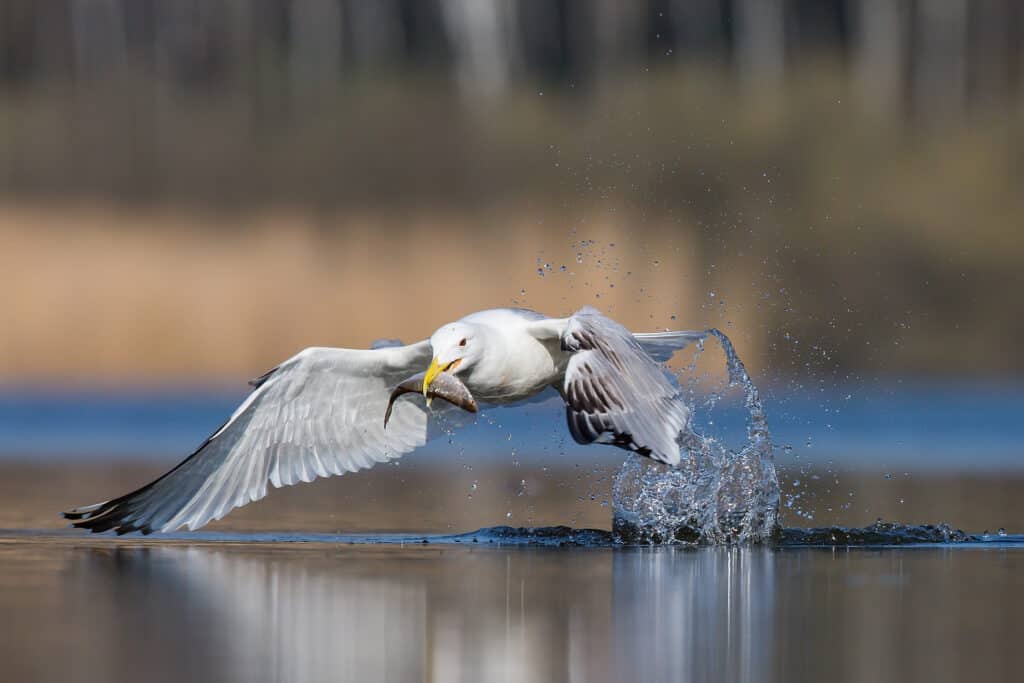
Seagulls are sometimes considered annoying and aggressive birds.
©Lukas Pavlacik/Shutterstock.com
And finally, the herring gull is the bird you will see most often on both coasts of the United States, including the Gulf of Mexico and the waters around Canada and Mexico. These gray and white birds are the most familiar seabirds at our beaches. And you can even find them in inland regions during migration and winter. Watch out for your beach snacks, as these birds like to hover!
Sea Birds to Watch for at the Beach: A Recap of the Top 12
| Rank | Types of Sea Birds |
|---|---|
| #1 | Booby |
| #2 | Albatross |
| #3 | Skua |
| #4 | Brown Pelican |
| #5 | Frigatebird |
| #6 | Common Murre |
| #7 | Double-crested Cormorant |
| #8 | Northern Gannet |
| #9 | Northern Fulmar |
| #10 | Petrel |
| #11 | Shearwater |
| #12 | American Herring Gull |
The photo featured at the top of this post is © Brian Lasenby/Shutterstock.com
Thank you for reading! Have some feedback for us? Contact the AZ Animals editorial team.







